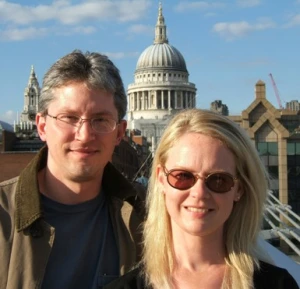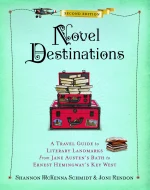With New Year’s celebrations now over it’s time for the hard work of resolution honoring to begin in earnest. Many of us will start the year resolving to spend less money and save more. If you’re like Shannon and me, the objective may be to accumulate enough to travel the world; or maybe you’re trying to build a college fund or pad a retirement nest egg. All worthy goals.
Unfortunately our good intentions are typically doomed to failure right from the start. By mid-year most of us will have fallen back into the same bad habits we resolve each year to end. We do that not because we lack the necessary willpower, but because we lack the correct perspective. To change our financial behavior we need to fundamentally change the way we think about money. We need to find a way to turn human nature, which constantly tempts us away from our long-term goals, to our advantage. Fortunately that is easier to do than you may think.
Before we get to that, though, it’s worthwhile to reflect on the way people typically approach personal finance and why that approach so often leads to bad outcomes. Most of us think about our finances as a series of flows: income minus expenses. If income exceeds expenses we’re doing well. If they match we’re doing okay. If expenses are higher than income we’re in trouble, or soon will be. Intuitively this makes perfect sense and is true to an extent.
Everyone’s income eventually stops. Are you ready?
The problem with this approach is that it leads us toward a monthly payment mindset. We start believing that we’re doing fine as long as our monthly income is at least as large as our monthly expenses. If income rises, as it tends to over a working career, we tell ourselves that we can afford more and nicer things. We size large purchases, like houses and cars, so that our monthly payments roughly match our current cash flow.
What we rarely consider is that at some point income eventually stops. Expenses, meanwhile, continue until the day we die. If we’ve planned well, income stops because we’re able to retire voluntarily. If we’ve planned poorly, income stops because we become too old or sick to keep working. At that point the unaffordability of our “balanced” income minus expenses approach becomes painfully obvious.
Folks who thought they were doing well because they never spent beyond their means and because their checking account always balanced one day discover, often too late, that their lifestyle depended too heavily on a paycheck that was destined to end.
So what is the alternative?
If you were to consult a financial planner1 and ask “how much money do I need to retire?” they’d collect a ton of personal information, run a fancy Monte Carlo financial projection, print out pretty looking papers with lots of charts and numbers, charge you a generous fee, and then tell you something fairly similar to this: “You need to accumulate 25 times your uncovered annual expenses in savings.”2 By “uncovered expenses” they’d mean the amount by which your expenses exceed the income you expect to receive from pensions, social security and other continuing income streams.
25 times!
Let that sink in for a minute. For every dollar in spending we need to accumulate twenty five dollars in retirement savings.
 That is a basic rule-of-thumb. It comes with all kinds of conditions, caveats, and assumptions. Depending on circumstances, that number could be somewhat lower or it could be far higher. Knowing the rule of thumb does not replace the need for a detailed retirement plan and it won’t exactly fit every individual situation. What it will do though, if taken seriously, is change your relationship with money.
That is a basic rule-of-thumb. It comes with all kinds of conditions, caveats, and assumptions. Depending on circumstances, that number could be somewhat lower or it could be far higher. Knowing the rule of thumb does not replace the need for a detailed retirement plan and it won’t exactly fit every individual situation. What it will do though, if taken seriously, is change your relationship with money.
How? By altering the equation. No longer is a dollar of expenses equal to a dollar of income. Expenses carry far more weight; twenty-five times more to be exact. Instead of comparing monthly payments with monthly income, you start thinking about the giant lump sum of cash that is needed to sustain those payments in retirement. Everything looks more expensive, and less affordable, in this context.
At this point in the conversation, it is easy to despair. All of a sudden the financial situation for the average American, where savings is currently just 3.4% of income, looks mighty precarious. Accumulating a savings balance of 25 times annual expenses is a daunting task.
Expense control is an extremely powerful financial tool
The good news is that we each have tremendous control over our expenses. The better news is that our financial future is significantly leveraged to how much we spend.
If what we just said is true, that a dollar in annual spending requires $25 in retirement savings, it is equally true that our savings needs decline by $25 for every dollar in annual spending we eliminate. That relationship sets up powerful incentives to slash spending.
Cutting out the daily three dollar latte seems trivial from a monthly expense perspective. Why bother? Things look quite different once we realize that eliminating the latte reduces our savings requirement by $27,000. 3 That’s right, deep-sixing the frothy coffee reduces the amount we need to save for retirement by $27,000. How does Folgers taste now?
Infrequent purchases that need occasional replacement have a similar dynamic. A new iPad may seem like a one-time cost of $400. What we don’t often consider at the point of purchase is that new things eventually become ingrained in our standard of living. Luxuries transform themselves into necessities. Buying that first iPad often means committing to a replacement device every couple of years. By doing so we also increase the amount of savings needed for retirement by about $5,000; a hefty price tag almost never considered when evaluating the affordability of such “one-time” purchases.
Be happy, save money
Thinking about money this way yields important psychic rewards. For most people, buying something activates pleasure centers in the brain. We like acquiring new things. It makes us happy, at least for a little while. Saving money, meanwhile, is painful. It requires sacrificing current pleasure for some murky future benefit. This kind of delayed gratification isn’t something the human mind is very good at accepting. For obvious reasons of survival, we’re designed to value eating an actual meal more highly than the promise of one tomorrow. This suits us well when things are in short supply but can lead to self-destructive over-consumption in times of plenty. The “25 Times Principle” helps turn these primitive instincts to your advantage by dramatically increasing the cost of current consumption.
 Instead of feeling good about our shiny new bauble, we’re forced to consider the damage its purchase causes to our financial future. Not spending, meanwhile, moves us 25 times closer to our financial goals and, more importantly, to the life we want. Suddenly we realize tangible, quantifiable, and immediate benefits by foregoing spending where previously there was only pain. This psychic 180 has the potential to completely re-prioritize our financial lives, making it easy and even enjoyable to save money.
Instead of feeling good about our shiny new bauble, we’re forced to consider the damage its purchase causes to our financial future. Not spending, meanwhile, moves us 25 times closer to our financial goals and, more importantly, to the life we want. Suddenly we realize tangible, quantifiable, and immediate benefits by foregoing spending where previously there was only pain. This psychic 180 has the potential to completely re-prioritize our financial lives, making it easy and even enjoyable to save money.
It also has the potential to change the way we see the entire material world. I already suspect that many of us will never look at a three dollar latte the same way again. The same holds true for big houses, fancy cars, designer wardrobes, and anything else we’re told we should want. Instead of viewing these things as objects of desire, it’s now possible to see them for what they really are: albatrosses that make it impossible for us to ever stop working.
Realizing these benefits requires one simple change: we need to value financial independence. We need to value a future were we have a chance of saying goodbye to paid work. The good news is that even if we value that future 1/25th as much as we value today’s purchase, putting that item back on the shelf is still an even money trade. And that’s a trade we can feel good about all day long.
Other Travel Money Articles:
Yes, Full Time Travel Really is Less Expensive than Staying at Home
How Much Does Long-term Travel Cost
How to Build a Mobile Business
How to Open Accounts Without a Permanent Home Address
20 ways to save for travel
4 Cards Every Traveler Should Carry
—————————–
Footnotes:
1 The information contained on this website and from any communication related to this website is for information purposes only. Neither Brian nor Shannon are registered financial advisors and do not hold themselves out as providing any legal, financial or other advice. We do not represent that any financial suggestion made here or elsewhere is suitable for you. Please consult your own financial advisor.
2 The “25 times” rule of thumb, alternatively known as the 4% safe withdrawal rate, was first quantified in research called the Trinity Study. The basic concept is that a portfolio of stocks and bonds has historically supported an inflation adjusted annual portfolio withdrawal of 4% for periods as long as 30 years with relatively high levels of success. Subsequent research has added to and refined this initial study. As always, past performance does not guarantee future results.
3 $3 * 365 * 25 = $27,375
4 Image of shopping girl courtesy of Photostock





















Reblogged this on aliaptech1.
LikeLike
Very well said. At this age, am already thinking about that as well. Of course, not to compromise the way I should be living right now. Another way to look at it is to have a realistic target savings per month and year which you know you wouldn’t need to touch (unless “it’s time”). Having an emergency fund as well is very important. And yes, acquiring your first ipad could produce a materialistic ripple effect, following the next versions. Add the expense of the electricity being used for it and the time you may consume while you use it for unimportant things (sometimes, it counters the productivity of an individual). Just means that we can be so consumed with materialistic trend and we don’t even realize that it isn’t only about the monetary expense but our time and attention as well.
LikeLike
In the current low interest environment I’m more comfortable with a 3% withdrawal rate, although it does somewhat depend on how long the money needs to last.
LikeLike
I don’t disagree. And I didn’t mean to advocate for a 4% withdrawal rate specifically. I was aiming at getting people to think about their current expenses in a different, and I think more useful, way. Whether you want to apply a 25x multiple or 33x multiple for that purpose probably doesn’t make a huge difference in affecting our purchasing decisions. The big impact comes form starting to think in those terms. Later on we can talk about refining our withdrawal rate based on market and longevity expectations.
LikeLike
We’re big believers that an increase in income should not increase your spending. Keeping our expenses low has gotten much easier since we became nomadic – no rent payments, no car, no accumulation of “stuff.”
Thanks for sharing the 25 rule. It’s new to me and I’m definitely going to keep it in mind.
LikeLike
Yeah, that’s certainly true. The temptation to buy things is severely curtailed when you have to carry that stuff on your back. 😀
LikeLike
As always, a wonderfully thorough and well-thought blog! Question: if that $25-to-1 pot of money includes assets like 401k’s, 403b’s, pensions, IRA’s, etc would you also consider it sunk in other, less liquid, assets like the equity in your home or business?
LikeLike
Hi Chuck. Hi Lori.
Normally I would not include equity in a primary home because you have to live somewhere. The question with a house is “how do you spend that equity?” If you sell your home you can buy another one, but that ties up at least a portion of that equity. You can choose to rent, but that raises your current expenses. Unless your annual rent expense is significantly less than 25x the value of the home you sold, you haven’t changed the equation much by selling.
A second home is a different story because it could be monetized or rented out as an investment property. The question there is whether you really intend to monetize the property as part of your retirement plan. If not, then I wouldn’t consider it as an “asset” for my primary plan.
I would include business equity but with care. I’d want to be extremely conservative in my valuation. I’d also want to take care not to double count the business. You shouldn’t use the business revenue to reduce your current expenses AND include the business equity in your portfolio.
I hope this was all more illuminating than confusing.
Brian
LikeLike
Hi Brian,
I enjoy all your posts; travel, opinions, observations photography and especially the nuts & bolts stuff, like this one.
Given that Shannon earns on the road (and I hope you do too, with your talent for photography & writing) would you mind sharing what ratio of savings to income you had when you started and has the ratio changed much in the last four or five years? Are you consuming your savings or the earnings those savings generate?
Selling the RV & Jeep has meant that the initial capital expenditure would have been somewhat recovered. I don’t want you to share your personal financials or provide actuals, just interested in how much you consider is required to enable your perpetual travel with the level of comfort and experiences you guys enjoy, (due to the five years of sacrifices prior to travel, when you both lived with the focus and commitment to your goals)
Cheers,
Jason
LikeLike
Hi Jason,
You ask good questions, the answers to which probably deserve an entire post (or several) of their own.
We’ve put a lot of thought into how to secure our finances in the face of often extremely uncertain sources of income over a period of time that may well extend sixty years into the future. Given those uncertainties we don’t rely on a single magic bullet. A conservative withdrawal rate from our savings is just one component.
At the time we left to travel in the RV we more than covered our living expenses with income from freelance work, rental income from the apartment we vacated, and investment income. So we’ve continued to save even as we travel fulltime.
Call that “Plan A”
“Plan B” involves maintaining ties to actual and potential employers. Freelance work not only gives us current income but is also something that is scalable, at least in theory. If “Plan A” starts to go sideways for any reason, the hope is that we can pretty easily grow our earnings by just doing more of the same kind of work we’re already doing.
“Plan C” involves maintaining an incredibly flexible expense structure. Our fixed costs are essentially zero. We could easily cut our expenses by simply slowing down our travels, exploiting more house-sitting opportunities, or choosing to settle down for a while in a low-cost location (Chiang Mai, Thailand was very nice 😀 ).
We think that with the combination of A, B and C we can sustain ourselves on the road indefinitely.
Happy travels,
Brian
LikeLike
Reblogged this on eddyleandroo10 and commented:
eddyleandroo10.wordpress.com
LikeLike